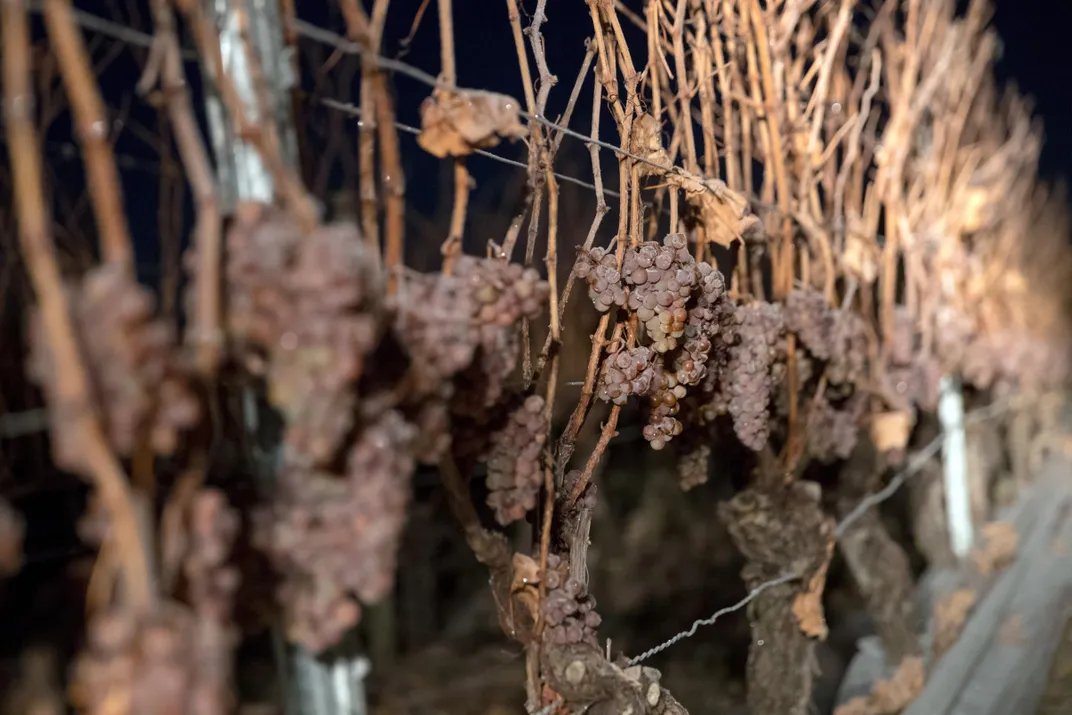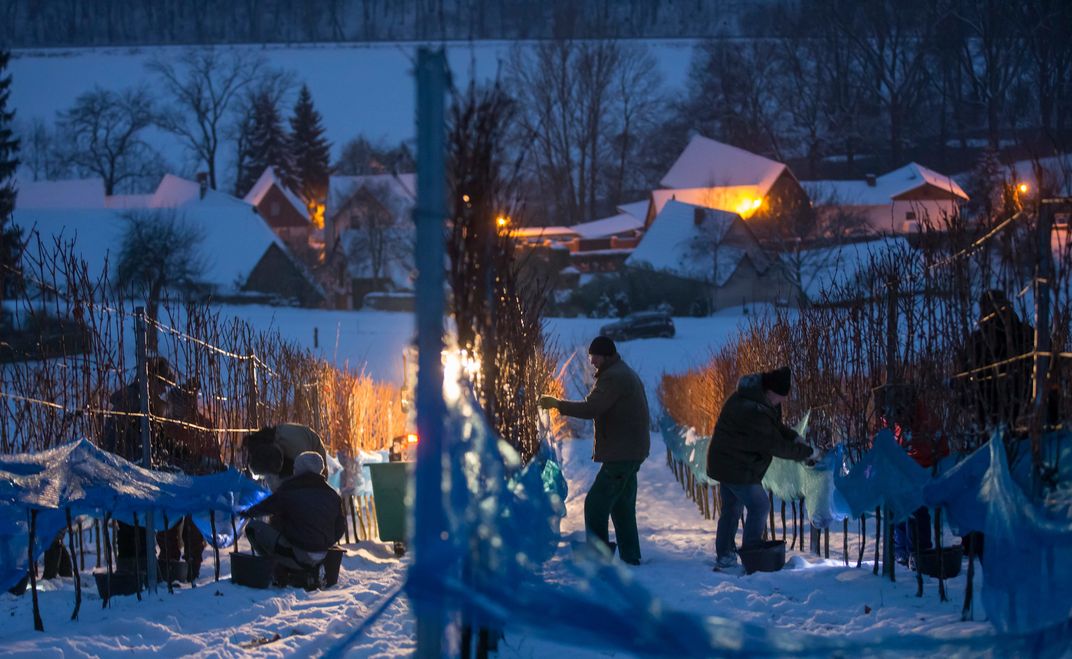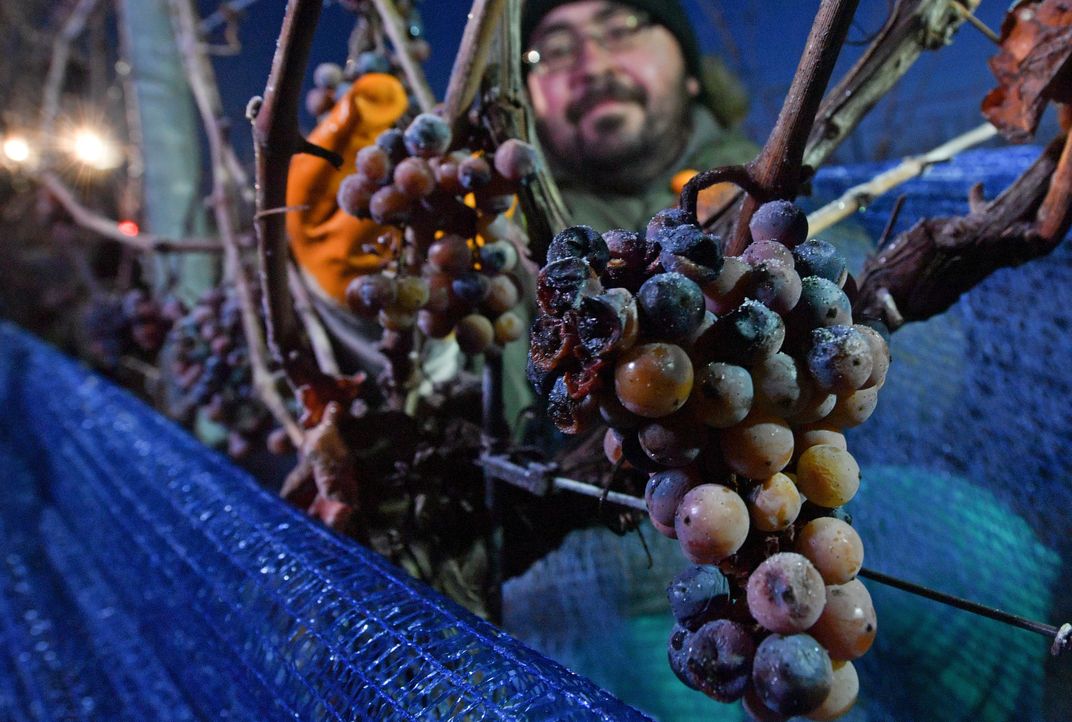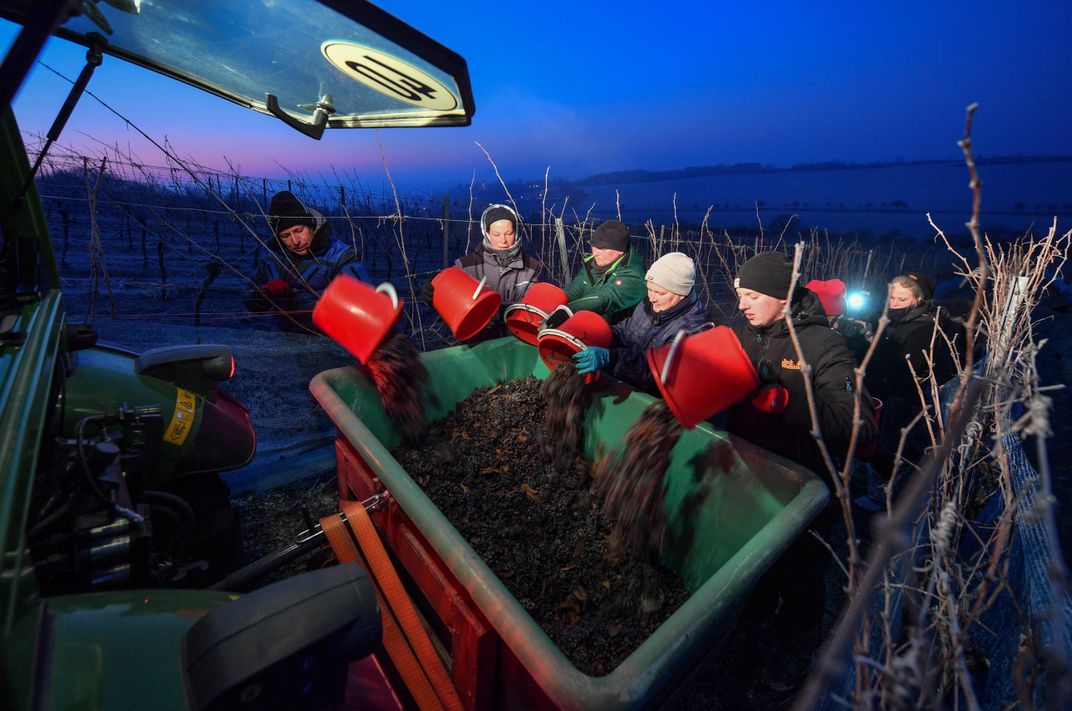A Warm Winter Left Germany Unable to Produce Its Famed Ice Wines
Known for their sweet flavor, ice wines are made from grapes left to freeze on the vine
/https://tf-cmsv2-smithsonianmag-media.s3.amazonaws.com/filer/56/9c/569cab0d-8f14-469e-917c-65e13ff5ea07/gettyimages-1036617166.jpg)
Known for their uniquely sweet flavor, ice wines are a prized treat made from grapes that are frozen while still on the vine. The viticultural tradition originated around 200 years ago in Germany, which remains a top producer of the drink. But this winter, according to David McHugh of the Associated Press, the country’s ice wine output has been drastically compromised by unseasonably warm temperatures.
The German Wine Institute announced this week that just one winery—Zimmerle, located in the region of Württemberg—had managed to harvest a batch of ice wine. "Beyond that, we are not aware of any other winemaker from one of the 13 German wine regions, who managed to produce ice wine in this mild winter,” said the institute's Ernst Büscher. As far as experts know, 2019 marks the first vintage, or harvest year, in German history with such a low yield.

Allowing grapes to freeze on the vine concentrates their flavors, leading to a delicious dessert beverage. But making ice wines is a finicky process. The grapes have to be picked when temperatures drop below 19 degrees Fahrenheit; if left too long, however, they might start to thaw and rot, which dilutes their juices. Winemakers have to be prepared to harvest the grapes within a few hours of temperatures dropping to the right range. During picking season, which can fall anywhere between December and February “producers ... have a small army of workers ready to harvest hard grapes in the dark at a moment’s notice,” explains Atlas Obscura.
This year, however, the weather in Germany simply did not get cold enough in most of the country’s wine regions. “[T]he required minimum temperature ... was not reached," the German Wine Institute said.
The yield of the 2019 vintage was exceptionally low; the lone successful harvest in Württemberg produced less than 100 liters of wine. But this is not the first time that temperate weather has confounded the efforts of Germany’s ice wine producers. Only seven winemakers managed to produce the sweet stuff during the 2017 vintage. “Before that, the winter of 2014-2015 was so mild that ice wine from the 2014 vintage is also an absolute rarity,” Büscher said, adding that the output of the 2013 vintage was low, too.

Germany certainly does seem to be heading towards warmer winters, says Peter Hoffmann of the Potsdam Institute for Climate Impact Research to the New York Times’ Christopher F. Schuetze. This winter, in fact, marked the second-mildest since record keeping began in 1881. “It could be an anomaly,” Hoffmann says, “but the longer you observe, the clearer the trend for warmer winter temperatures stands out.”
Shifting temperatures threaten to adversely impact the country in a number of ways, including the melting of Alpine glaciers, increased precipitation during winters and increasingly dry summers. Heat and drought conditions put Germany’s crops at risk—including, perhaps, ice wine grapes. Because it is difficult to produce, ice wine is already an expensive commodity. “If the warm winters accumulate in the next few years, ice wines from the German wine regions will soon become even more of a precious rarity than they already are,” Büscher says.

Ice wine is no longer a uniquely German speciality; Canada is now the largest producer of ice wine in the world, though its industry is also threatened by climate change. Still, “the most famous (and expensive)” ice wines continue to hail from Germany, according to the Times. Whether the country will be able to keep producing its famed alcoholic delicacy is now uncertain.
"In [the] future,” Büscher tells CBC Radio, “maybe you don't have any ice wine anymore."
